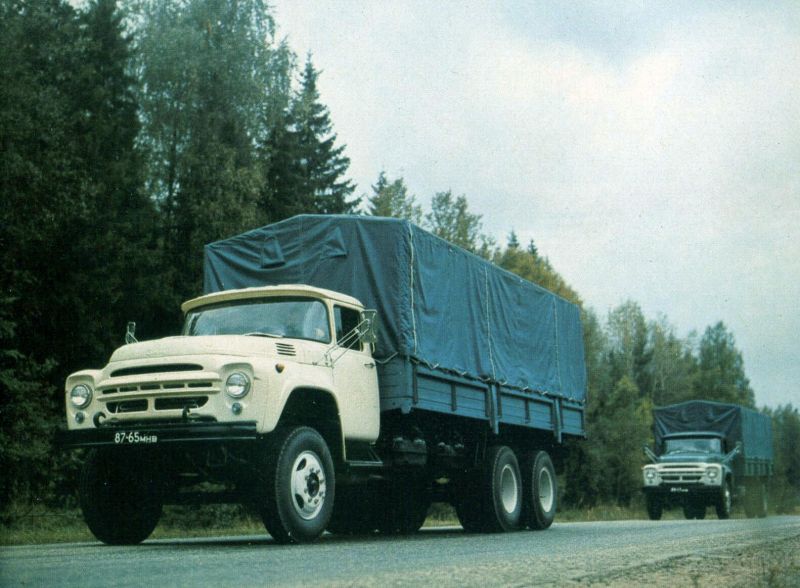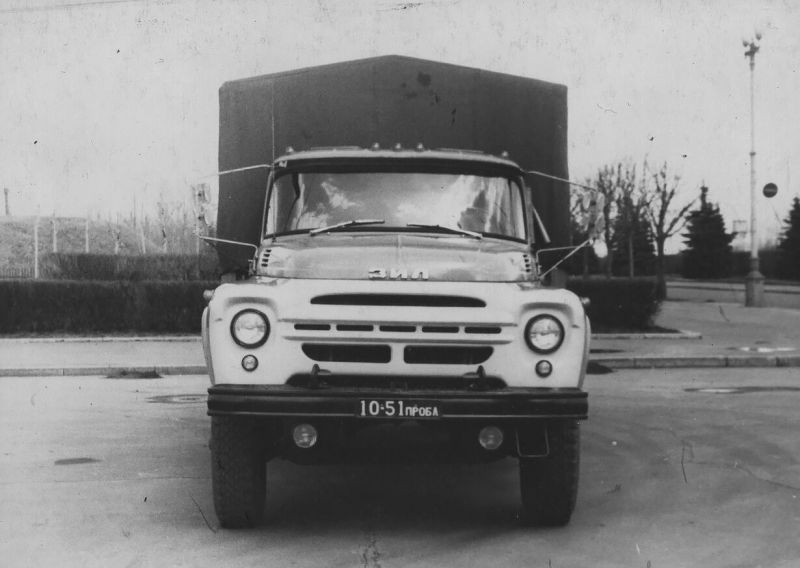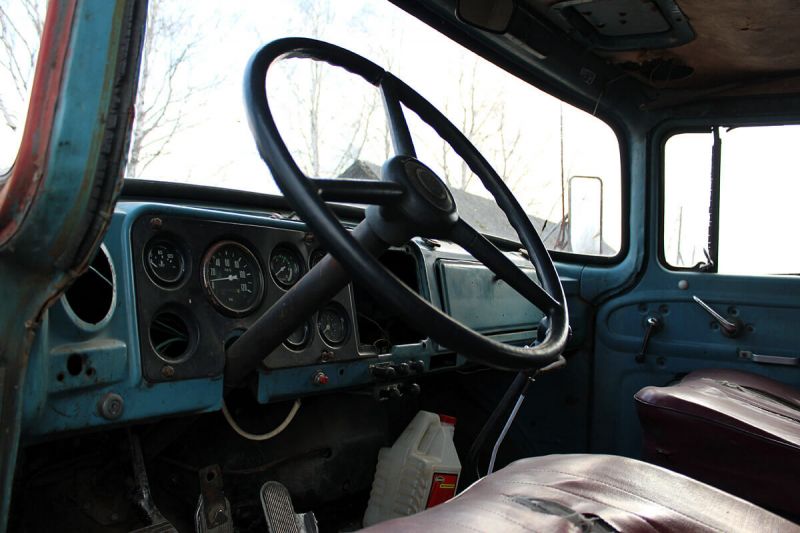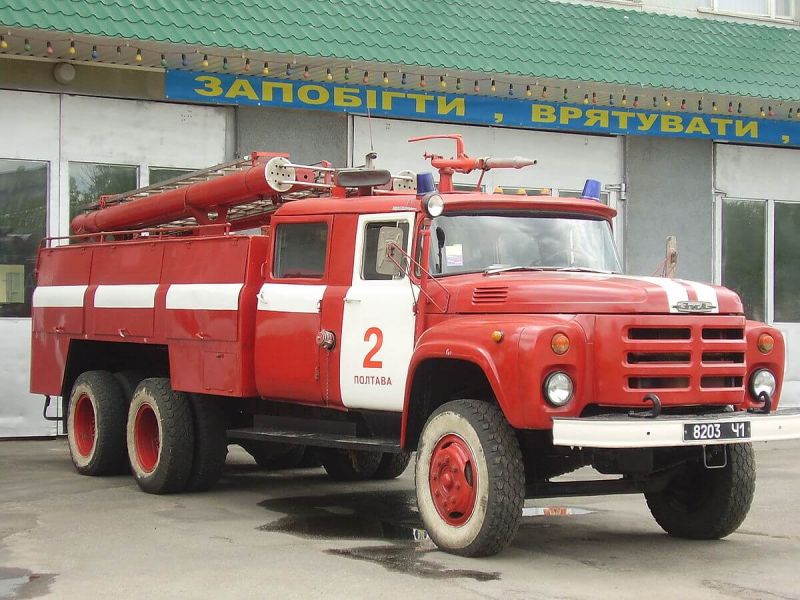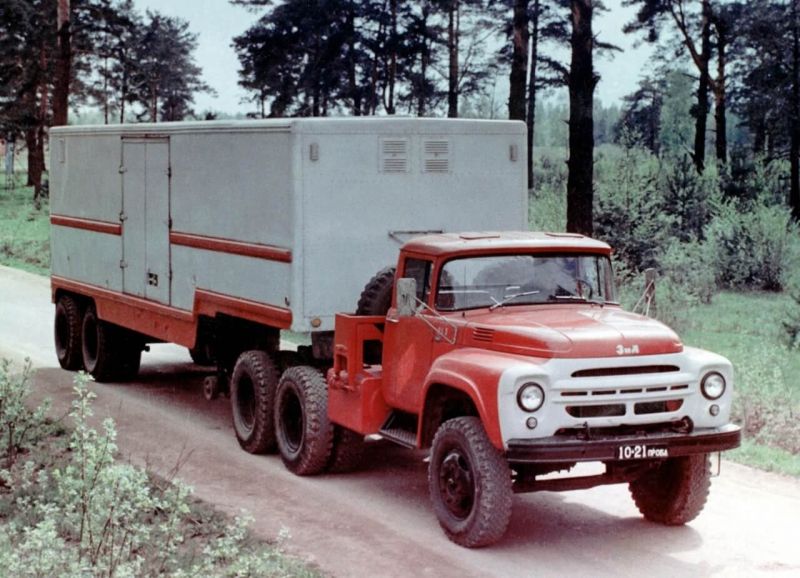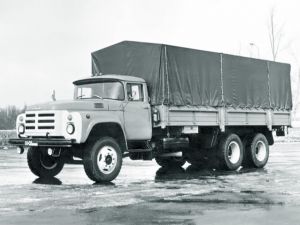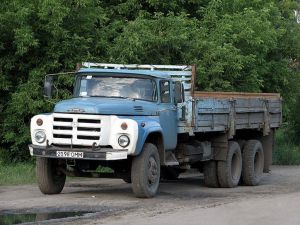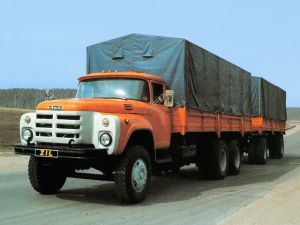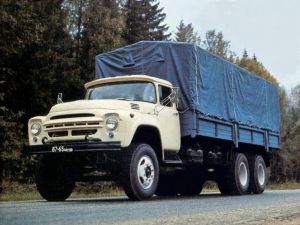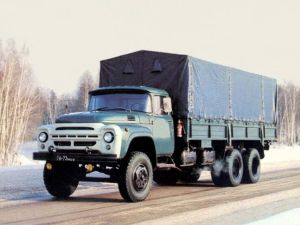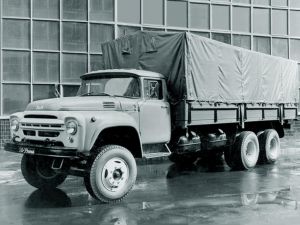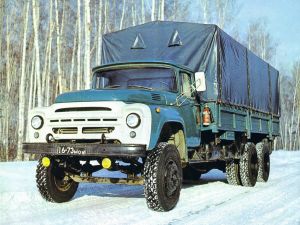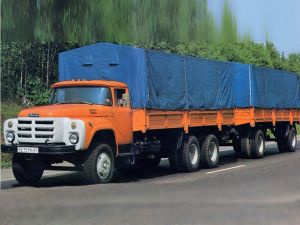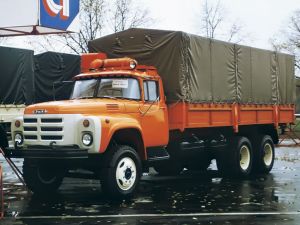ZIL-133
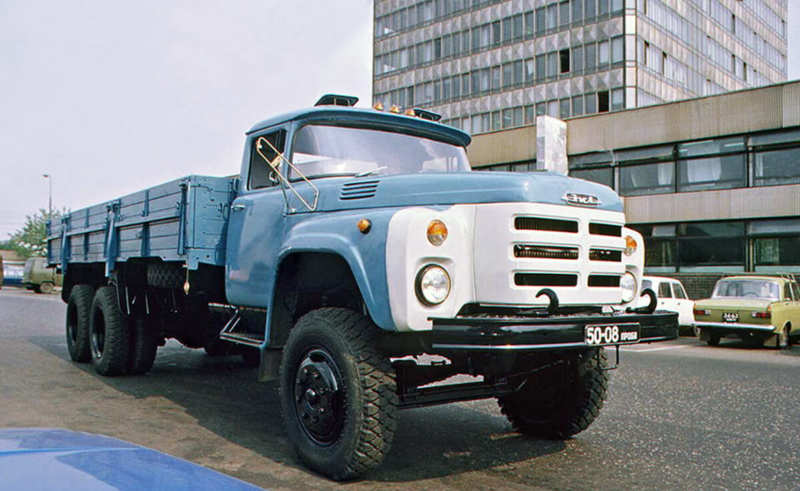
An interesting breed from ZIL-130. Truck, tractor truck, truck for rural-urban needs and many other things – all this is “ZIL-133” and its modifications. The car, produced in Moscow, was even highlighted at the Olympic Games in the 80s of last century. Any motorist will be interested to get acquainted with the history and capabilities of this law enforcer. The whole model range is ZIL.
Car history
The legendary ZIL-130 model is familiar to every motorist. However, how well this model was produced in the 70s, does not make it eternal. Thus, already in the early 1980s there was a need for additional modifications, which will be more practical and productive.
Strange as it may seem, there were no existing developments, and the existing ones had to be sent to the plant of another manufacturer. There was nothing left to do but climb into a distant box for old ideas and frozen projects.
Such a project was ZIL-133, or more precisely, its modifications. The model itself served more as a prototype and even at that time on the roads was extremely rare.
The modified design and still the same body length did not give special advantages, something else was needed. Here are the differences in the size of the wheelbase, the purpose of the chassis and payload of subsequent versions played a significant role in strengthening the Soviet car industry.
Cabin and bodywork
The cabin is taken from the parent’s version of “130.” The engineers only did some restyling and raised it a bit. The front bumper remained white, and the main part of the cabin is found in many color differences.
Above the radiator grille is the abbreviation of the manufacturer ZIL. Under the grille there are hooks for towing with a cable. On the roof of the case there are parking lights, also on the sides – traditional repeaters of turn and the main light from the front.
It’s very spacious inside. There are three seats – a driver’s sofa and a combined passenger sofa. Comfortable panoramic glass gives a good view, even despite the nose position of the engine.
Inside, everything is made for the driver’s convenience – ventilation hatches, proper placement of rearview mirrors and other elements simplify the workflow. The steering seat is tilted and adjustable, which is enough to set up a workstation for any type of person.
All controls are copied and inserted from the ZIL-130 cab. Thanks to this driver did not need to get used to anything new. It is necessary to consider that everything remained not only the same, but also preserved the proper convenience. Measurement sensors and other information devices are even now hard to call obsolete. Typical ZIL-133, in addition to full equipment and loading, is able to pull an additional trailer.
The body structure consists of wood, in some modifications it is made of metal. Representatives with an average base have only side walls tilted, the machines with extended rear part have tilting walls on all three sides.
To increase the vector of purpose on the body can be installed awning with a special frame. Instead of a cargo area for the 133-x representatives, modules for solving problems in agriculture as well as in other industries have been developed and are being developed. Conveniently, the truck can be ordered with an empty chassis and mounted on its own. Relevant for companies with narrowly focused activities.
Specifications
At maximum load, both tractors and platform trucks can move at a decent speed, while maintaining the sanity of control. Gasoline and diesel engines from ZIL and KAMAZ still show excellent performance and economy of use.
Transmission
A pneumatic actuator is used to change gears in the divider. An interesting feature is that the actuation valve is connected to the pneumatic actuator pusher in the clutch drive system.
The driver can, without the use of clutch pedals and accelerator, pre-select a suitable gear in the divider with the switch and then switch it on at the right moment by simply depressing the clutch pedal. The convenience of such a device when driving on terrain with frequently changing road conditions can hardly be overestimated.
Brake system
The entire brake mechanism consists of four elements.
- The working system is the main air brakes. The braking of the rear and front wheels is divided. Control is carried out by means of the brake pedal in the cab and brake crane by means of special levers;
- Parking brake – the aim is to ensure that the vehicle is stationary on a horizontal surface or slight slope. The system also operates pneumatically through a special faucet. The brake chambers are equipped with special energy accumulators that prevent the rear axle from moving the wheels;
- Auxiliary system – relevant for frequent braking. It relieves part of the load on the main brakes by means of engine braking. This element extends the service life of all brakes together;
- Spare system – serves for braking the vehicle in case of main brake failure. Otherwise it is called emergency braking. It is controlled by a parking crane, which actuates the energy accumulators.
Sound and light indication is provided in the machine for monitoring all systems.
Chassis and suspension
The frame consists of two pressed-type side members, which are connected by means of crossbars. The latter play an important role in the behaviour of the frame. The stiffness is ensured by the special structure of the first, fourth and fifth transverse joints.
This is important because the first is supported by the engine and some other work items; the third is supported by the frame spars; the fourth is two identical half channels; and the fifth by a towing and coupling device.
The front wheel suspension is dependent on longitudinal semi-elliptic springs and telescopic shock absorbers. The suspension of back wheels – dependent balancing on longitudinal semi-elliptic springs with jet rods. Frame – spar-type, stamped, welded.
Wheels were produced together with cars at the Likhachev plant in Moscow.
Modifications
- The first prototype “one hundred and thirty-three” was indexed by “133B”. The machine was launched in 1966. It was a truck tractor. The vehicle itself was produced in circulation, not exceeding the number of its parent.
- “ZIL-133H” was once again a trial version for testing. The car was produced in 1968.
- ZIL with an extended base and the ability to pull the trailer was marked “133G”. The sides of the body in this version were tilted from all three sides. Modification and its branches came off the assembly line until 1987 in series.
- The above-mentioned model was changed to form a truck with an extended base “ZIL-133G1”. The difference from the younger brother was the increased volume of fuel tank. Carrying capacity was 8 tons.
- “ZIL-133G2” was a fully similar copy of “133G1” with increased payload up to 10 tons.
- Construction modifications were also needed. The ZIL-133GYA truck crane became one of the last Soviet trucks of the Likhachev plant. To implement the modification, a number of crossings were made. Short wheelbase from a dump truck with a chassis adapted to the installation of a crane “KS-3575A”, completed this power unit KAMAZ-740. It was produced until 1992.
- “ZMU-8 on the chassis of ZIL-133GYA is an agricultural modification for processing fields. ZMU is a loader of mineral fertilizers. Production went from 1979 to 1992.
- On the same base “ZSA-7” was produced – a loader of sowing machines for automobiles. Having left the conveyor for the first time in 1979, it was produced for the next 13 years.
- The next pilot version to improve ZIL vehicles was the model “ZIL-133GYAS”. Went off the conveyor in the years 1980-1984.
- Especially for the Olympics in 1980, the Likhachev plant provided a car for transportation of horses – “TS-5982”. The van was delivered to the ZIL-133G chassis. Externally the car is attractive. The field of sports competitions was produced by 6 more representatives of the model for the needs of equestrian police.
- The mighty prototype of “ZIL-E133VYAT” from 1982 differed significantly from its colleagues. This truck tractor had a diesel engine KAMAZ-5E7403, equipped with turbocharger. The cabin was used by ZIL-133GYA, but was 170 mm higher. In 1988, trying to upgrade the truck, a sleeping place was added to the cabin, which was revolutionary in the automotive industry of those times.
- From 1991 to 1992, the ZIL-133GM was produced as a model for experiments.
In 1992 the Smolensk plant of KDM began to produce the ZIL-133G4 for street cleaning. These included snow removal, sprinkling and vacuuming machines. It is still in production. - “ZIL-133G40” with an extended base and a tent body covering was used and is used for transportation of various cargoes. Serially produced from 1992 to 1999.
- In parallel with the previous version, the base with the onboard refrigeration unit – “ZIL-133G42” – came off the conveyor belt. It is used in the corresponding spheres.
- The Likhachev plant in the period 1992-99 produced a truck tractor with a shortened base – “ZIL-133D42”.
- The next truck tractor, but already of a new generation – “ZIL-133VYA” – began to be produced in 1995, and successfully fulfills the tasks set up so far.
- ZIL-133 was used as a base for production of no less popular truck ZIL-MMZ-4516. Production period 1993-2002.
Pluses and minuses
A number of positive features include economical operation. Repair of the vehicle does not require a lot of effort, including replacement parts. When purchasing components, the customer can easily navigate the assignment of elements, as they are divided into appropriate subgroups. Everything for replacement can be purchased from an official dealer, which adds quality assurance. If a mass repair is planned or the customer is a regular customer, a discount system is provided, which definitely attracts them.
Negative machine “ZIL-133” behaves in conditions of absolute impassability or in snowy weather. Despite this, in all weather conditions the trucks perform their work correctly. Negative impression is also left by the noise insulation of the interior and the quality of processing of external elements of the machines. Anyway, it can be attributed to minor shortcomings.
We sum up
The Soviet-built ZIL products have gradually developed into a modern automotive industry through the “one hundred and thirty third” model. Its modifications were not used in the units of structures, and the rest of the trucks are even still used at full speed.
Despite the use of unification and small circulation the model “133” occupies a worthy place in the history. Later, merged with the ZIL-130, simplified versions of the trucks were produced.
We advise you to read the article: ZIL – history of the autogiant


